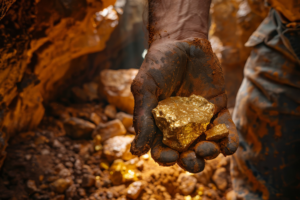Mirvac (ASX:MGR): Things are set to get worse before they get better

Founded in 1972, Mirvac (ASX:MGR) is Australia’s largest listed developer of residential, commercial and industrial property. Arguably, it is one of the most unique, being the first in Australia to be “carbon positive” and the first on the ASX to offer Built to Rent (BTR) apartments. But it has never reached its pre-pandemic highs.
Last time we wrote about this stock – immediately post its FY24 results – we titled the article,’ Things are set to get worse before they get better’. Don’t take it from us! The company admitted to investors last week that FY25 would be another difficult year.
But shares are up 20% so far in CY25. It is easy to put it down to declining interest rates and YIMBY sentiment at least formidable vs the NIMBYs. Good signs, no doubt – but are there any signs from within the company.
What are the Best ASX Stocks to invest in right now?
Check our buy/sell tips

All about Mirvac (ASX:MGR)
Mirvac has Assets Under Management totalling over $22bn, including office, industrial, retail, residential and built to rent properties across Australia – mostly in Australia’s major cities. It has a further $16bn in third party capital under management and a $29bn pipeline.
The Built to Rent (BTR) apartments are arguably the best thing to like about the company. We don’t want to get ahead of ourselves but in a space that has seen little innovation since the early 1960s when the concept of strata was born, we think BTR could have a similar impact on the market. It took a while for Mirvac to get off the ground but it hit the ground running.
The company has over 3,000 residents to call one of MGR’s BTR apartments across Sydney, Melbourne and Brisbane home and has a medium term target of 5,000. It is a small player, but the sector is small too, with BTR making up less than 1% of Australia’s housing stock. In the UK, it is over 5% and in the US, 12%. Just increasing the BTR pipeline to just 3% of Australia’s housing stock would make it a $290bn sector with 350,000 units. Mirvac is remaining cautious, planning an expansion to 5,000 homes over the next 5 years, and currently sticking too the premium end of the market.
ESG investors would be pleased to know that this company achieved carbon positivity back in 2021, nine years ahead of its original 2030 target, becoming the first Aussie property company to be able to say it was ‘carbon positive’. To be carbon positive is better than being ‘carbon neutral’ because then you eliminate more carbon than you emit. For Mirvac this has been done by relying on renewable energy and optimising asset performance.
A tough 2 years
Each of Mirvac’s sectors went through different conditions in the past few years. For some, it was just a case of rising interest rates and the same supply chain issues plaguing the rest of the construction sector. Other had their own difficulties, most notably the office space has (and continued to be) impacted by people working from home.
Overall its NTA (Net Tangible Assets) has fallen from $2.79 to $2.26 between 2022 and 2025, a decline of 19%. Despite offices being the most troublesome sector, Mirvac has doubled down on offices, buying AMP’s Capital office fund, boosting its FUM by $7.7bn. The Residential end of the sector has been hit by inclement weather and subcontractor insolvencies. Mirvac still made a profit margin of 17%, but below the 18-22% long-term average.
Despite telling investors it was setting itself up for recovery, it admitted conditions would be ‘challenging’ in FY25. CEO Campbell Hanan blamed a lower contribution from the development business and higher net interest costs related to development activities but said better times were ahead.
‘There is significant value to play for and multiple drivers of earnings growth in FY26 and beyond,’ he said noting there were some green shoots in market activity, particularly higher pre-sales.
Light at the end of the tunnel?
Mirvac released FY25 results in August 2025. Some of its results were backwards, but there were some green shoots in the business. Its statutory profit was $68m in the black vs $805m in the red. The company’s lot settlements were up 39% (over 2,000) with pre-sales of $1.9bn. It bought 3 new communities in its lend lease portfolio. And the company’s balance sheet was healthier with gearing within the 20-30% target, $1.2bn liquidity and debt was 57% hedged.
Investors were promised a return to growth in FY26 and to expect EPS of 12.8-13c per share representing 6.7-8.3% growth and for a 9.5cps distribution.
Analysts covering Mirvac are nuanced. For FY26, they expect a ~50% jump in revenue to $935.3m (up from $644m) but for flat EBITDA and EPS of 13c. Then for FY27, $989.5m revenue and 14c EPS. For FY28, $1.08bn revenue and $0.16 EPS. Their mean target price is $2.44, a mere 7% premium.
Mirvac’s multiples are 16.5x EV/EBITDA, 17.5x P/E and 2.4x PEG which suggest the company may still be overvalued.
Conclusion
We think it isn’t the right time to buy Mirvac. Even if you disagreed with the outlook for property development and investment in FY26, we think it’d be better to invest in Dexus that is trading at 11x and analysts are more optimistic over.
Blog Categories
Get Our Top 5 ASX Stocks for FY26
Recent Posts
West African Resources (ASX:WAF) Hits All-Time High After Record Gold Output: Buy, Hold, or Wait?
West African Resources: A Strong Gold Producer to Watch West African Resources (ASX: WAF) hit an all-time high of A$3.32…
The Metals Driving Australia’s Market in 2026
Australia will still be a metals market in 2026; that part is not up for debate. What is changing is…
Patagonia Lithium (ASX:PL3) Surges 53% on Ameerex Partnership: Is This Lithium Explorer a Buy?
Patagonia Lithium Secures Key Partnerships for Growth Patagonia Lithium (ASX: PL3) surged 53% to A$0.13 on Friday, hitting its highest…


